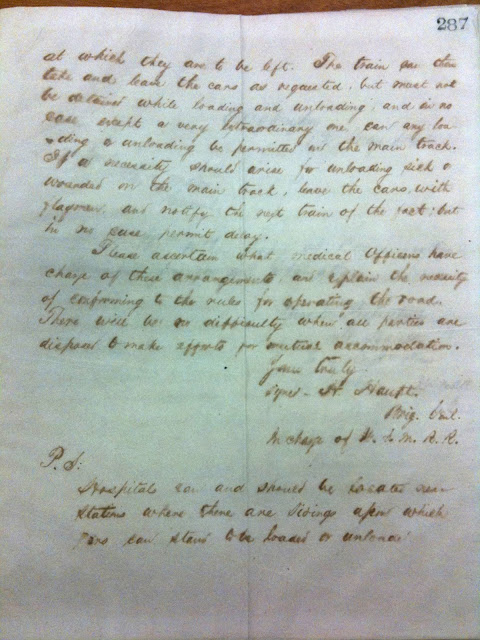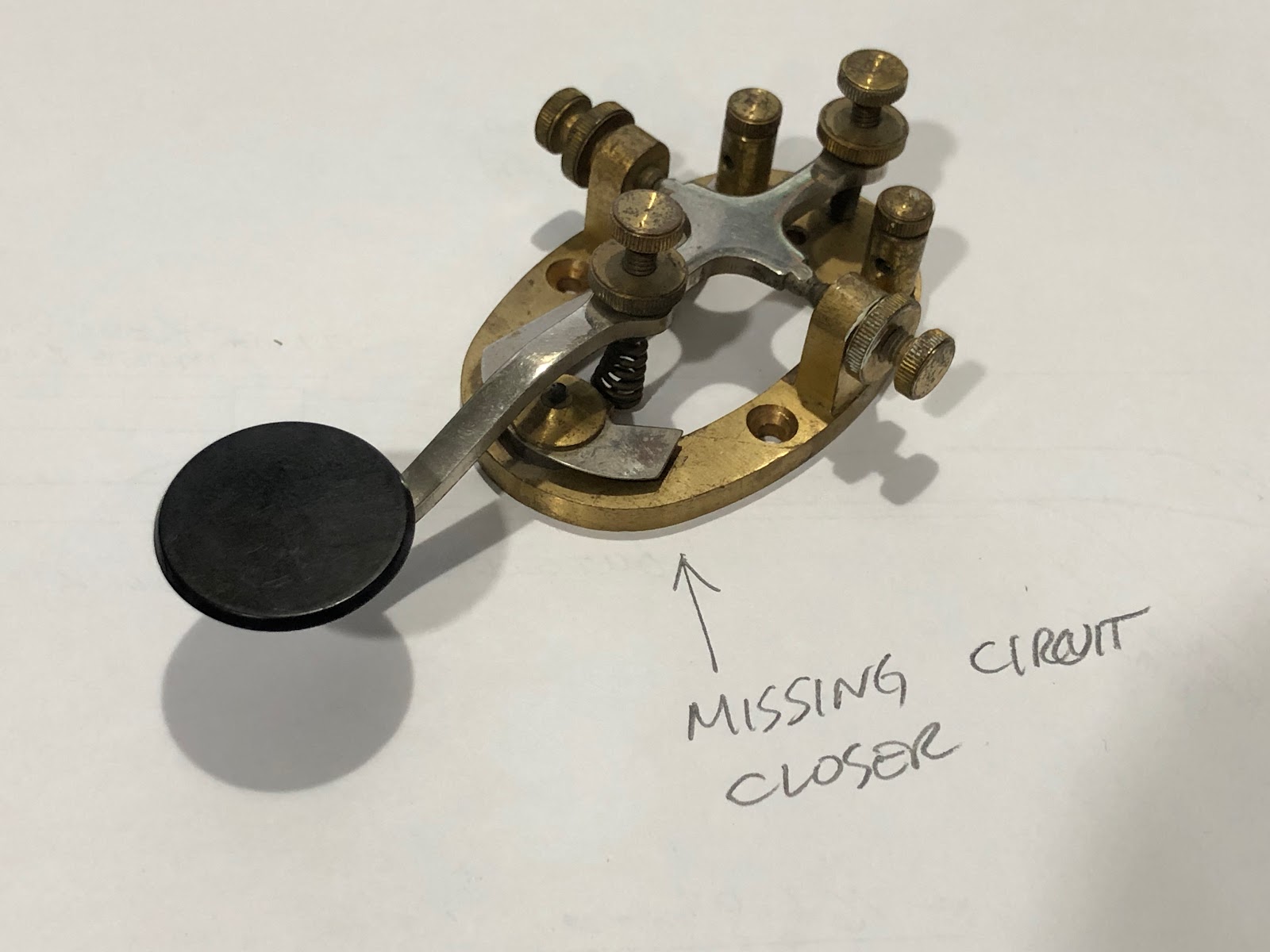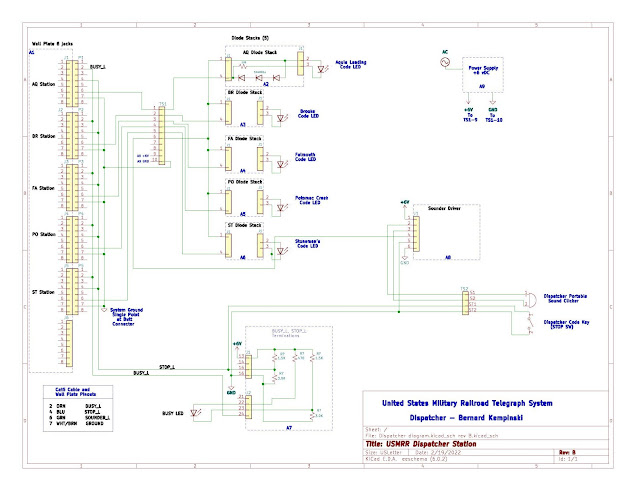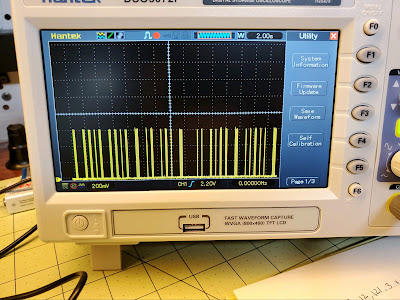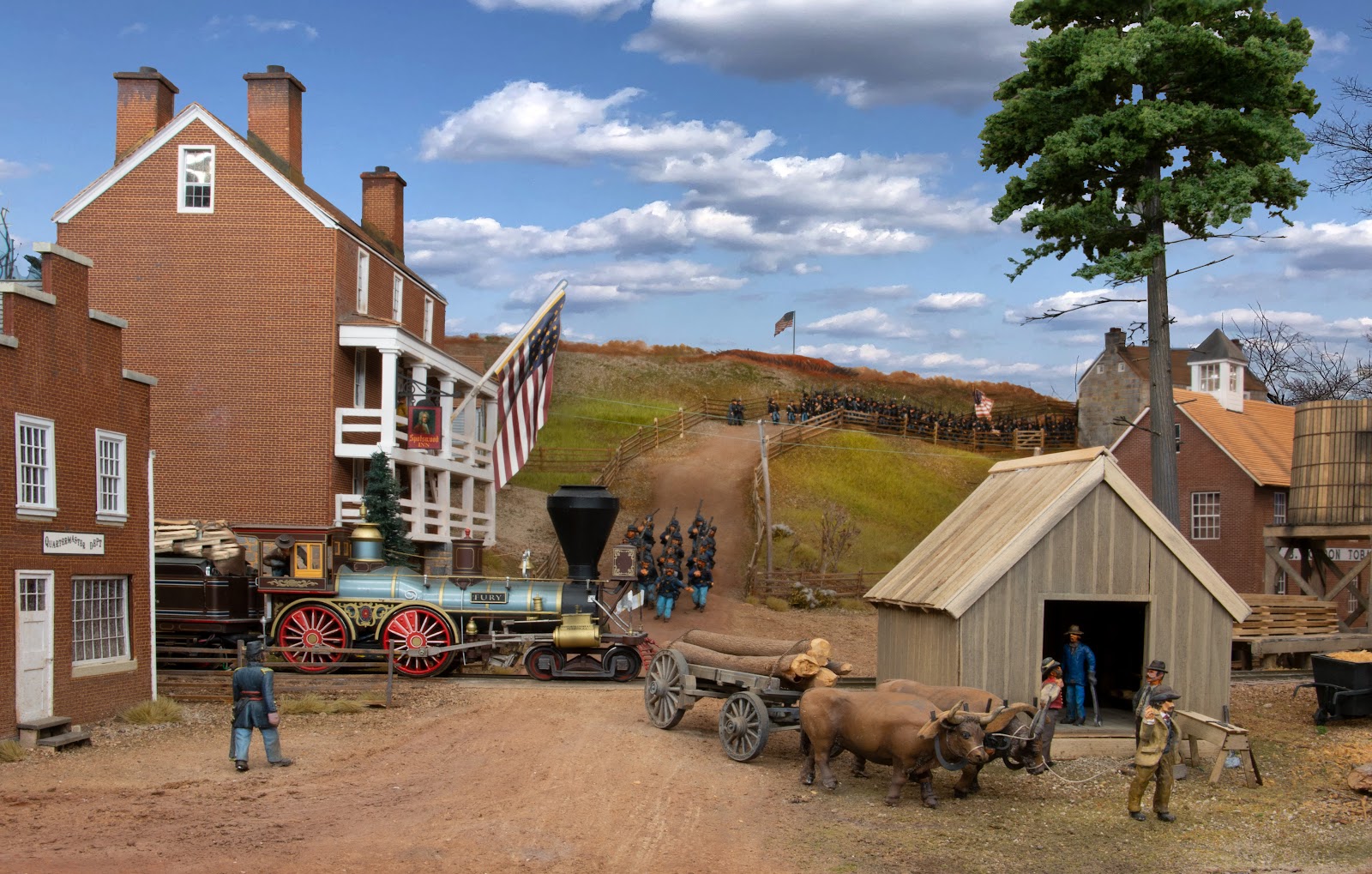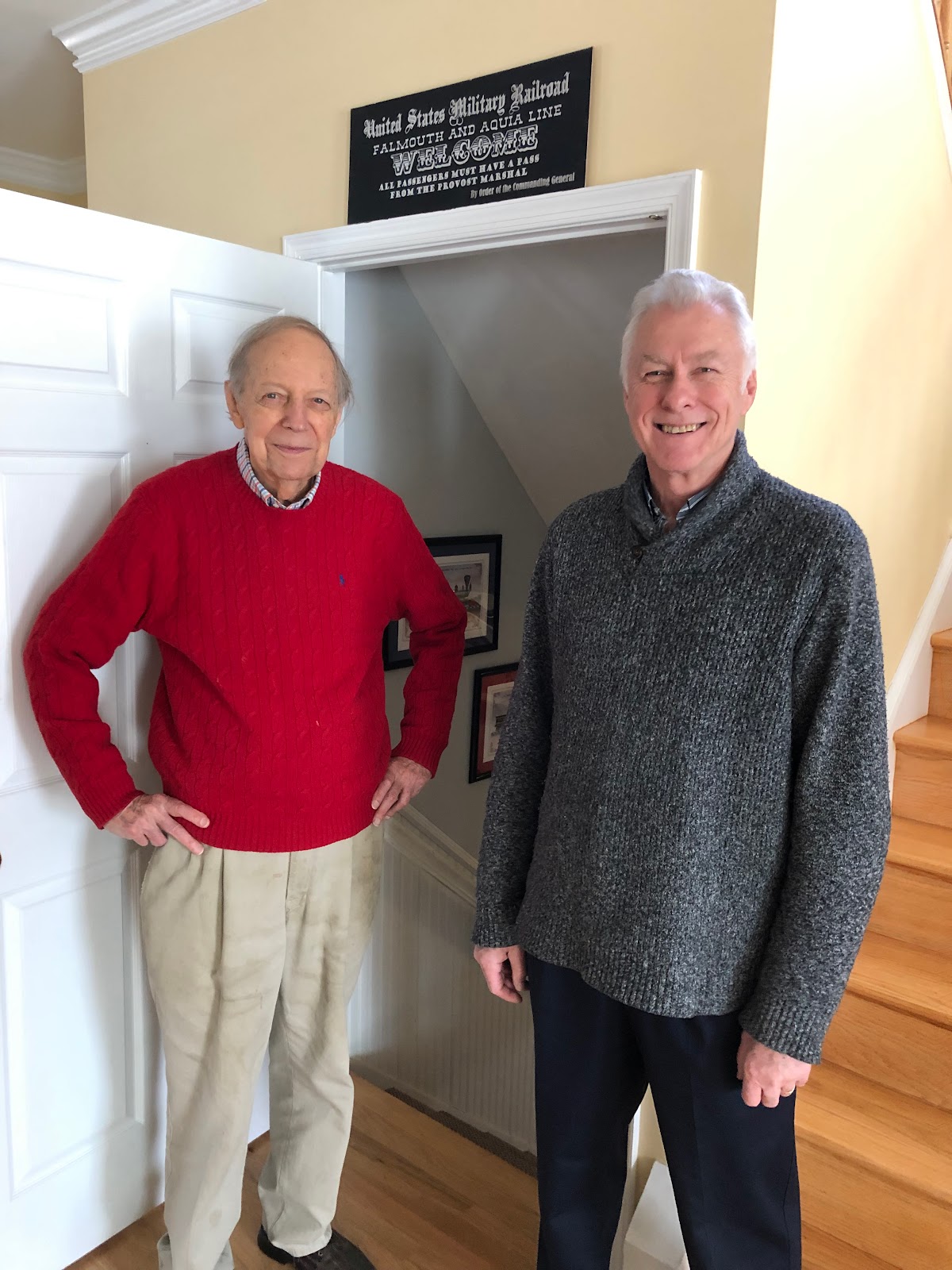Amby stopped by this afternoon so we can review progress of the telegraph stations. I needed to make more base plates for him so he can continue to build the stations. He has completed one and plans to rewire the one I built as that one has some loose wires. That is probably due to my lousy soldering and its two trips across the country.
Here you can see the two stations completed so far "talking" to each other. The red flashing light tells the train operators that the telegraph is busy and to not try to send an OS report until that stops. All the stations will flash a red light when a message is being sent from any one station. Amby suggested a revision to the busy circuit so that the busy light stays on continuously while messages are being transmitted. That is probably a better way to do it as then the operators won't get fooled by halts in the flashing due to delays in between messages.
Amby is approaching the task very methodically. He is creating circuit diagrams of the whole system so it will be easy to understand and debug. He made a spreadsheet listing all the wires and their color codes. He also wants to dig into the Arduino code to better understand that. I am really benefiting from his experience and an EE.
Next we surveyed the locations of the telegraph stations on the model railroad. We need to find places where they will be out of the way and have sufficient room for the electronics behind the fascia. There are good places for all of them except at Aquia Landing. At the location I may have to make a separate station base plate as the fascia is only 3 inches tall.
Amby also suggested a cheat sheet with all the possible OS messages listed so that guest operators can dispatch more easily. However, he did not know about the random messages that I added to the spec and Steve Williams included in the software. There are about 10 messages that play at random. Those messages are based on actual messages I found at the National Archive. Amby told me that he had left the telegraph system hooked up at his house while he was working on something else. At one point it started to send a message. He was quite surprised by that as he did not know about the random messages.

While Amby was wiring this week, I took a crack at making simulated brass plates using my 3D printer. I was able to use the existing 2D artwork that I generated for the laser cutter to create the STL files needed for printing. I imported 2D dxf files into Fusion 360 and made them into 3D objects. Once I converted them to STL files I printed them in resin. I did get an estimate from Shapeways on printing these in actual brass. The cost was over $115 per plate. I would need 5 of these, and 5 smaller plates for the lights. That was too costly as I can make them in house with resin for far less.
Next I needed to paint them. It took me a few tries, but the best results came by spraying the model with flat black Vallejo acrylic. Then I carefully brush painted the raised letters and brass surround with acrylic gold craft paint. I used a dabbing motion with a nearly dry brush so the gold paint would not soak into the gaps between the numbers. Then I gave the model a coat of clear gloss acrylic. They might look better with a matte finish.
Visit to John Sethian's O Scale PRR layout
 |
| Action on John Sethian's PRR O Scale layout. The clock tower conceals a support post. |
On Saturday Morning I had a chance to visit John Sethian's O scale 2-rail PRR layout. It is a gorgeous layout depicting Pennsy RR action in the electrified districts somewhere near Trenton, NJ. He is building catenary for his electric motors to run under. The catenary is not live on his railroad. John has very cleverly modified many 3-rail models to 2-rail to get the equipment he needs for his railroad.
I like how he uses large urban buildings as view blocks. He also uses forced perspective on the background scenery and structures made from photo prints. His layout is full of finely detailed scenes and clever devices. For example, he has a section of scenery that lifts out of the way using a linear actuator.
Here are examples of two finely detailed scenes. The office is based on a Edward Hopper painting. The used car lot contains models of all the cars John has owned now or in the past. He had a Porsche at one time, but he really is a Jaguar aficionado. In fact his garage has three of them, including an XKE that he purchased after it was on fire and totally rebuilt.
 |
| John posing by his Jags |
Work session at Doug Gurin's layout
On Thursday, I was at Doug Gurin's house to continue to help him build benchwork. We got a tricky piece of sky board installed on a very rough cinder block wall. Then we cut the plywood bench tops for the long wall. A few more sessions and we should have Doug's benchwork ready for him to lay track.


